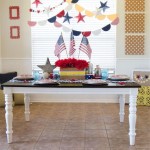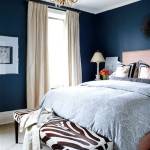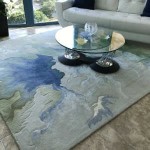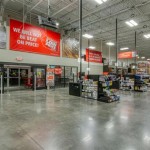How To Charge For Interior Decorating
Determining appropriate pricing for interior decorating services is a crucial aspect of building a successful and sustainable business. It requires careful consideration of various factors, including experience, skill level, geographic location, the scope of the project, and the desired profitability. This article will delve into different pricing models, provide insights into calculating expenses, and offer guidance on effectively communicating fees to clients.
Understanding Interior Decorating Services and Pricing Variables
Interior decorating encompasses a wide array of services, from initial consultations and space planning to sourcing furniture, selecting finishes, and overseeing installation. The pricing structure must reflect the complexity and time commitment involved in each stage of the process. Before establishing pricing, it's imperative to define the scope of services offered and identify the target clientele. Are you focusing on residential, commercial, or niche markets? What level of involvement will you have in the project – providing design concepts only, or managing the entire implementation phase?
The pricing model should also consider the following variables:
Experience and Expertise: Seasoned decorators with a proven track record and specialized skills command higher fees than those new to the industry.
Geographic Location: Market rates for interior decorating services vary significantly depending on the region. Urban areas with higher living costs typically support higher fees.
Project Scope: The size and complexity of the project directly impact the time and resources required. Larger, more intricate projects naturally warrant higher fees.
Clientele: The type of clients you serve can influence your pricing. High-end clients may be willing to pay premium rates for exceptional service and exclusive designs.
Overhead Costs: Rent, utilities, software subscriptions, marketing expenses, and insurance all contribute to overhead and must be factored into your pricing.
Profit Margin: After covering all expenses, the pricing model should ensure a reasonable profit margin to sustain the business and allow for growth.
Exploring Different Pricing Models
Several pricing models are commonly employed in the interior decorating industry. Each model has its advantages and disadvantages. Evaluating the specific needs of the business and the types of projects undertaken will help determine the most suitable approach.
Hourly Rate: This model involves charging clients a fixed hourly rate for the time spent on the project. It's a straightforward approach suitable for projects with undefined scopes or when the time commitment is difficult to estimate upfront. Tracking time accurately is critical when using this model. Detailed time logs should be maintained, specifying the tasks performed and the duration. It is also recommended to provide clients with regular updates on the hours spent and projected costs.
Flat Fee: This model involves quoting a fixed price for the entire project, regardless of the time spent. It offers clients price certainty and can be advantageous for projects where the scope is well-defined. However, it requires careful estimation of the time and resources required to complete the project. Unexpected delays or changes in scope can erode profitability if the flat fee is not adequately calculated. To mitigate this risk, a detailed contract outlining the scope of work, deliverables, and payment terms is essential.
Percentage of Project Cost: This model involves charging a percentage of the total cost of goods purchased for the project, including furniture, fixtures, and materials. It's a common approach in the industry and can be lucrative for projects with substantial budgets. The percentage typically ranges from 10% to 30%, depending on the level of involvement and the complexity of the project. Transparency is crucial when using this model. Clients should be provided with detailed breakdowns of all expenses and the markup applied.
Cost-Plus Pricing: This model involves charging the actual cost of goods and services, plus a fixed markup or percentage to cover overhead and profit. It ensures that all expenses are covered and provides a clear understanding of the pricing structure. However, it may require more administrative effort to track costs accurately. Detailed invoices and receipts should be provided to clients to support the cost calculations.
Value-Based Pricing: This model focuses on the perceived value of the services provided to the client. It takes into account the benefits the client will receive, such as enhanced aesthetics, increased property value, or improved functionality. It often requires a deep understanding of the client's needs and aspirations and the ability to articulate the value proposition effectively. This method allows for higher profit margins, but it requires strong sales and marketing skills to convince clients of the value being offered.
Calculating Expenses and Determining Profitability
Accurately calculating expenses is fundamental to establishing a profitable pricing model. This involves identifying all direct and indirect costs associated with providing interior decorating services. Direct costs are those directly related to a specific project, such as the cost of goods purchased, subcontractor fees, and travel expenses. Indirect costs, also known as overhead, are expenses incurred regardless of the specific project, such as rent, utilities, insurance, and marketing.
To calculate profitability, subtract the total expenses from the revenue generated from a project. The resulting figure represents the profit margin. A healthy profit margin is essential for sustaining the business and allowing for future growth. Profit margins typically range from 15% to 30% in the interior decorating industry, but this can vary depending on the pricing model and the overhead costs.
Software tools designed for project management and accounting can streamline the process of tracking expenses and calculating profitability. These tools can help to automate tasks such as time tracking, invoicing, and expense reporting.
When estimating project costs, it's essential to factor in potential contingencies. Unexpected delays, material price increases, or changes in scope can impact the budget. It's advisable to include a contingency buffer of 5% to 10% to cover unforeseen expenses.
Regularly reviewing and adjusting pricing is also essential. Market conditions, competition, and changes in operating costs can necessitate adjustments to the pricing model. Staying informed about industry trends and benchmarking against competitors will help to ensure that pricing remains competitive and profitable.
Communicating Fees Effectively to Clients
Transparency and clear communication regarding fees are crucial for building trust with clients and avoiding misunderstandings. The pricing structure should be explained explicitly in the initial consultation and clearly documented in the contract. The contract should outline the scope of services, deliverables, payment schedule, and any potential additional fees.
When presenting fees, be prepared to justify the value of the services being offered. Highlight the expertise, experience, and creativity that will be brought to the project. Emphasize the benefits the client will receive, such as a beautifully designed space, increased property value, or improved functionality.
Offer clients options and flexibility whenever possible. Present different design solutions with varying price points to allow them to choose the option that best fits their budget. Be willing to negotiate fees within reasonable limits, but avoid compromising on the quality of services. It's often more effective to adjust the scope of the project rather than drastically reducing the price.
Address any concerns or questions clients may have about the fees promptly and professionally. Be prepared to provide detailed explanations and breakdowns of the costs. Building a strong relationship with the client based on trust and open communication will increase the likelihood of a successful and mutually beneficial project.
By carefully considering these factors and implementing a well-defined pricing strategy, interior decorators can establish a sustainable and profitable business while delivering exceptional value to their clients.

How To Charge As An Interior Decorator The Focal Point

How To Charge As An Interior Decorator The Focal Point

Creating An Interior Design Quotation A 7 Step Guide Punchlist
A Detailed Look At Interior Design Services Capella Kincheloe

How To Charge As An Interior Decorator The Focal Point

How Much Do Interior Designers Charge

How Much Does It Cost To Hire An Interior Designer Sfd

How To Charge As An Interior Decorator The Focal Point

Free Interior Design List Templates Venngage

Interior Design Fees How To Your Services 2024 Spaces








